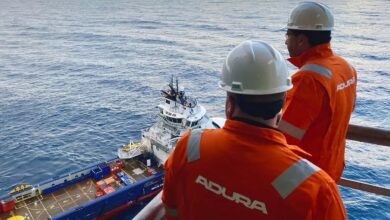Murphy Oil Corporation promotes Eric Hambly, Ted Botner
Effective 1 February 2024, Murphy Oil Corporation has confirmed that its Board of Directors appointed Eric M. Hambly to the role of President and COO and E. Ted Botner to EVP. Both will continue to report to Roger W. Jenkins, CEO.
Over his 18-year career with Murphy, Mr Hambly has played a vital role in the success of its global exploration and production operations. He has earned roles with increasing responsibilities, primarily focusing on offshore operations in the Gulf of Mexico and Malaysia, as well as onshore operations in the US and Canada. He was promoted to EVP, Operations in 2020.
Mr Hambly earned his bachelor’s and master’s degrees in chemical engineering from Brigham Young University and has completed the Advanced Management Program at Harvard Business School.
Joining Murphy in 2001 as an attorney, Mr Botner has held several positions with increasing responsibilities in the US and Malaysia, culminating in 2020 with his role as Senior VP, General Counsel and Corporate Secretary. He will maintain his role of General Counsel and Corporate Secretary.
Mr Botner earned bachelor’s degrees in arts and business administration from the University of Texas, a Master of Business Administration from Southern Methodist University and a law degree from the University of Arkansas.




